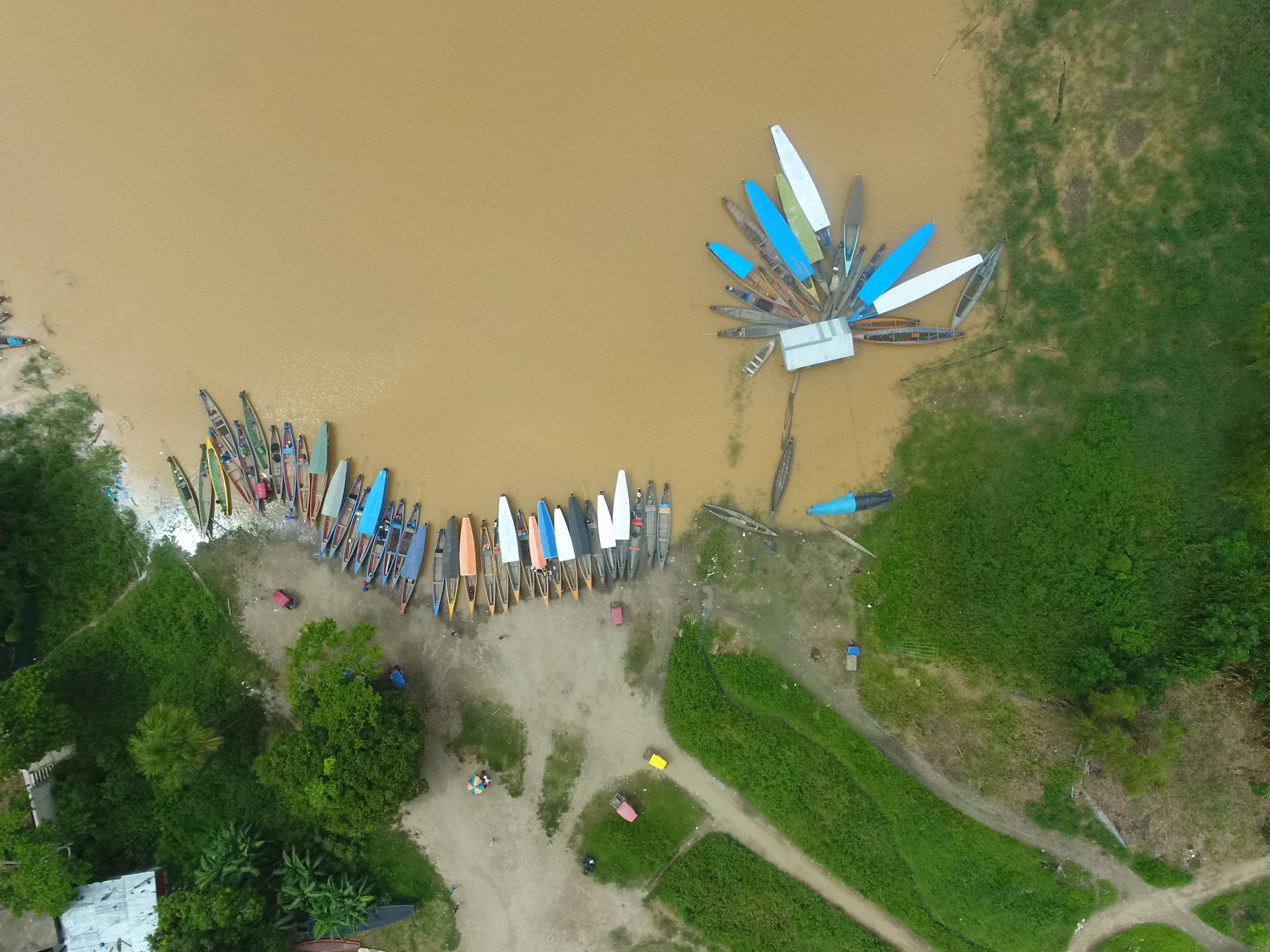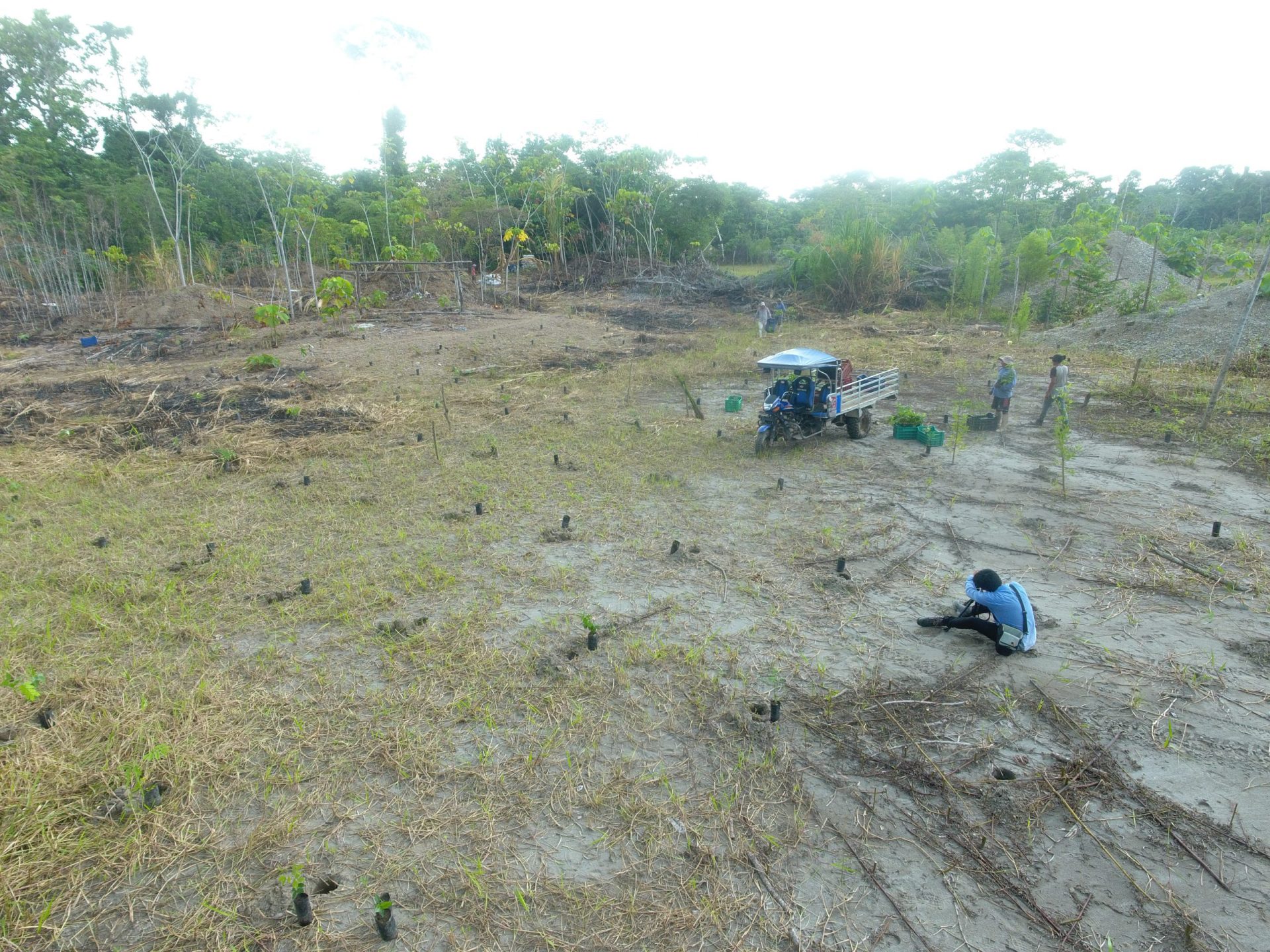Watch a video of the project above, or click here.
This post is from Charles Espinosa, an intern working with our Latin America program team. Charlie is pursuing a master’s degree in Latin American studies at Columbia University, with a focus on Cuban history.

The Madre de Dios region of Peru is a hotbed of ecological and economic riches. Located in the Amazon Basin, it is the biodiversity capital of Peru and a gateway to a large area of protected lands. It is also stocked with natural deposits of gold.
Between 1999 and 2016, gold mining resulted in the removal of 68,228 hectares (262 square miles) of rainforest in Madre de Dios.
 The Pure Earth team at a former mining site that was stripped bare. On the ground are seedlings ready for replanting.
The Pure Earth team at a former mining site that was stripped bare. On the ground are seedlings ready for replanting.
While Pure Earth primarily focuses on mitigating mercury contamination by training miners in a mercury-free alternative, recently, the team began tackling the big problem of deforestation caused by small-scale gold mining.
Alluvial mining, which involves using suction pumps to extract gold from streambeds, is one of the largest sources of income in the community. Unfortunately, this technique has generated many challenges for the local population and environment.
“It is quite complicated to reverse that process,” explains Pure Earth Peru project coordinator France Cabanillas in a short film documenting the project.
“You are working in a primary forest that has tree species over 200 years old… [and] it is not just an issue of the plant. There are several factors at work. The problem of soil, mercury and the hydrobiological issue or the formation of artificial pools.”

First Application of Mining Restoration Plan
In December 2017, Pure Earth partnered with CINCIA (Amazon Center of Scientific Innovation) to ecologically restore the Paolita II Mining Concession of Madre de Dios.
The project represents the first-ever application of CINCIA’s mining restoration plan, an extensively-researched technique to rehabilitate degraded rainforest.
The restoration was an arduous process. First, plant species were carefully selected for their ecological and economic potential based on previous pilot studies conducted by CINCIA.
Nine different species were selected for the restoration.
Many species were valuable for multiple reasons. The Huito tree, for example, is widely used for timber but also functions in local indigenous populations as a natural ointment, medicine and temporary tattoo dye.

After obtaining the seedlings from local nurseries in the city of Puerto Maldonado, the project team, including seven university students trained by CINCIA, hauled the supplies down the Madre de Dios River and through a backcountry trail to the degraded site.

Due to heavy rains, fallen limbs and artificial pools produced by mining activities, the trail was nearly impassable. In several spots, the team constructed makeshift bridges and rafts to successfully transport the supplies across flooded areas.

By the end of the planting, the team dispersed more than 4000 kl (kiloliter) of compost and planted 4,166 seedlings. In March 2018, the team will add 744 additional seedlings to reinforce initial growth.

Reforestation is a gradual but rewarding process. Within about thirty years, the eco-system should be completely restored and self-sufficient.

While 2.5 hectares is just a fraction of the deforestation in Madre de Dios, the Pure Earth Paolita II plantation will function as a model and training center to help future stakeholders responsibly close mines without leaving behind a legacy of social and environmental degradation.

As France Cabanillas explains, “We have learned that [mining] is here to stay. We cannot cover our eyes and say that it will go away, because it will not… We have to work with mining in order to improve and to reduce its impacts.”

To learn more, watch the short film documenting the restoration, which includes an extended interview with Pure Earth project coordinator France Cabanillas.
From the Project Page: Restoration of Rainforest Stripped By Gold mining in the Amazon
##
This project was funded by the U.S. Department of State to assist the Peruvian government and civil society in assessing artisanal gold mining sites, planning remediation efforts and strategies for alternative livelihoods, and sustainably restoring affected natural resources. Partners included the Ministry of Environment (MINAM: Ministerio de Medio Ambiente) of Peru.
Pure Earth also works in many other artisanal gold mining areas around the world to reduce the impact of toxic mercury while maintaining livelihoods. Because different methods work at different sites, project teams test a variety of approaches; some that eliminate the use of mercury entirely, and others that use (and recapture) mercury.











